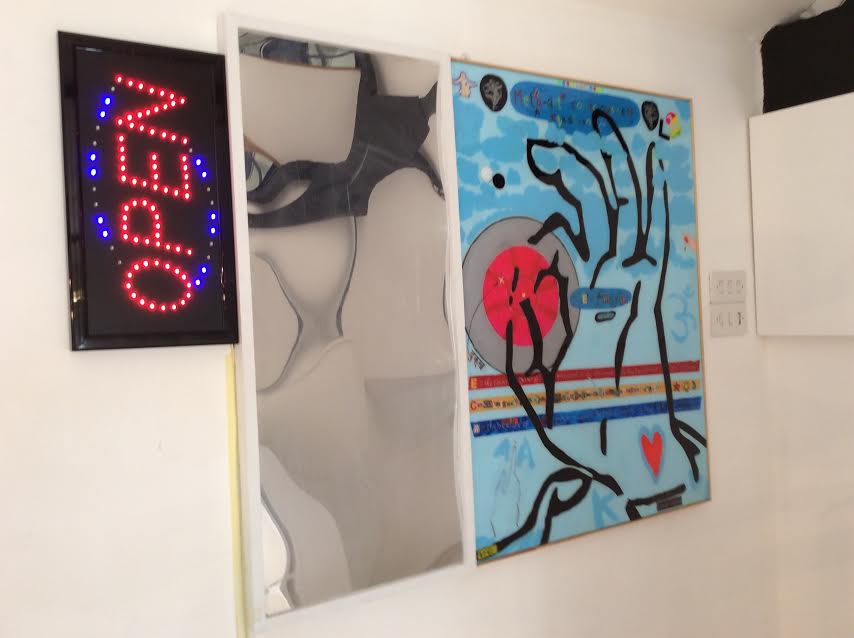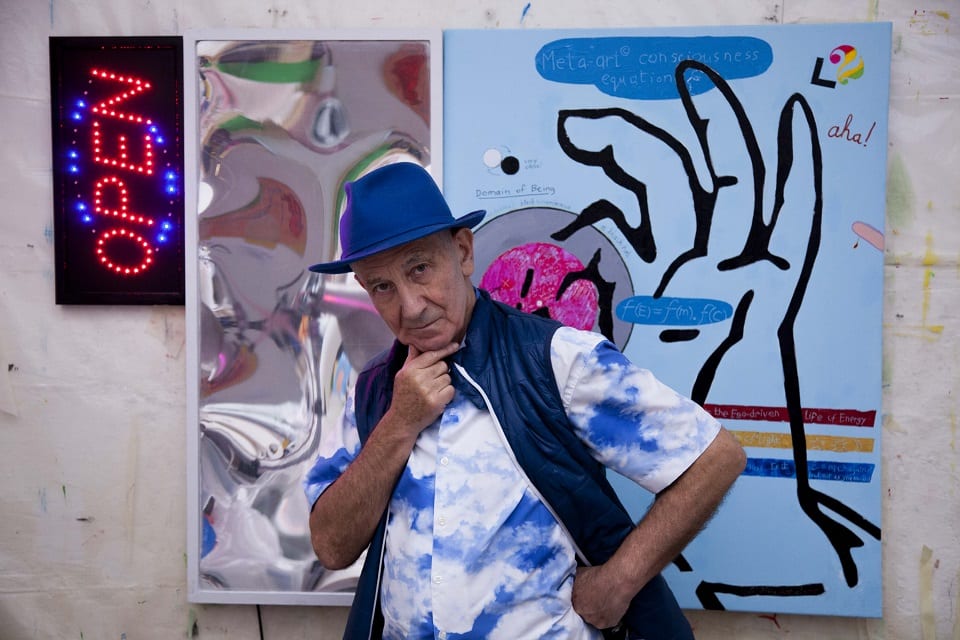The work of award-winning artist Moich Abrahams has been selected for numerous exhibitions in London, including Institute of Contemporary Arts, Hayward Gallery, Whitechapel Gallery, Camden Arts Centre, Royal College of Art, Menier Gallery and The Discerning Eye at The Mall Galleries, amongst others. Aesthetica catch up with him ahead of his new show at the London Group Annual, considering the marriage of form and content in his paintings.
A: Your work is currently on show at the London Group Annual – how was the experience putting together the exhibition and what are you hoping that audiences take away from the pieces on display?
MA: I had a lot of fun and came across lots of challenges when creating this piece for the show: firstly, I was experimenting and playing with different ideas for the “content”, whilst secondly, and the most challenging aspect of all, was using epoxy resin for the first time.
It was a complex business deciding where it was hung in the show: as it is a multimedia, three-part piece – like a triptych – I thought the mirror aspect of it would have benefited from more frontal display space. Nonetheless, I hope visitors will be able to enjoy what I made. Perhaps, it has a sort of didactic aspect which maybe will mean that people could get more from the work apart from visual enjoyment? That is, it might provoke a bit of curiosity about the “content”?
A: Could you discuss the processes behind the painting on show – what were you intending for the piece in terms of style and content?
MA: Previously, I made a multimedia piece called The Origin of UFOs, structurally congruent, at least, for The London Group Centenary exhibition, and I wanted to create a work with a similar combination. In terms of style, I aspire to “get out of the box”; I love combining spontaneity and playfulness with exploring deeper aspects of the unconscious. I am fascinated with both unwrapping the mysterious and reinventing child-like expressiveness. Central to this process is the art of “letting go.” Allowing the eye to see via intuition: what may seem to be an accident, could actually be the way forward offering unexpected resolution of disparate complexities. In this piece, the content derives from the fact that I am passionate about a certain sort of the “spiritual” enquiry. Specifically, it concerns the pursuit of freeing oneself from the pain inherent in all sentient existence. I’ve even included a hint of a mathematical formula about this!
A: Many of your other paintings are bright, with geometric shapes and abstracted forms. Does this painting tie into this pre-determined style?
MA: Hopefully this work offers something fresh. Incidentally, currently, I think of myself as tending to be figurative, albeit in a way “not as you would know it.”
A: Do you think that the work speaks to any of the others in the event, i.e. does it make connections with any other artists’ work on a formal or conceptual level?
MA: The essential criteria of The London Group is about the quality of the work and in that sense I strive to relate with everybody in the exhibition. Apart from that, I am more concerned with attempting to express what I want to offer.
A: How does the painting sit within your practice as a whole: is it a development of ideas from previous works or something new altogether?
MA: Structurally it follows a work made previously, however the content and specifically the metaphor suggested, of the “white verses black hole”, being the only place to be, is a new offering.
A: What is it about paint that stands out to you as an innovative and contemporary method, despite the rise of other digital methods of art-making?
MA: Contemporary digital techniques, perhaps often utilise what I call “plastic”, press button technology, like plastic bags, have only been around for a few decades, whereas “plasmic”, orgasmic, gestural or diagrammatic expressions, have been etched into human DNA since man evolved. With this current work, I have taken a leap beyond scratching the imperative itch, by combining, for the first time for me, paint on canvas with use of epoxy resin. It seems to give this piece an unexpected 21st century look.
A: How has the show helped to develop your career, and what do you have planned in terms of future projects?
MA: Showing with The London Group since the 1970s has afforded me opportunity, challenge and critical appraisal, which have been invaluable over the years. When I stopped painting for more than two decades I completely went off the art-world radar, so I am now back dipping my toe into the mire of the art business regarding recognition and branding. As far as future works … watch this space! The modern art industry prediction is that within 20 years a painting will be sold for one billion pounds. Will it be this one?
Moich Abrahams’s painting is on show at The London Group Annual from 12-21 October and the artist will be in attendance on 12 October 2-6pm. Find out more: www.thelondongroup.com
To see more of Moich’s work or to contact him:
www.moichabrahams.co.uk
m@moichabrahams.co.uk
Credits:
1. Working Theory: The Emptiness of Emptiness. What more the fuck! Spec: Mixed media canvas on board, plastic and LED screen – 100cm x 147.5cm x 4cm Made 2016 but dated 2061. Photos courtesy of Moich Abrahams and Antonio Parente.







